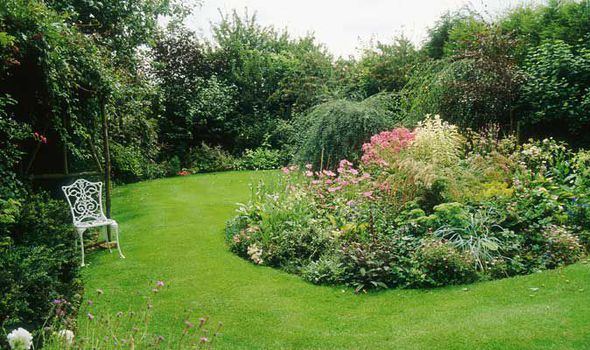Garden
A garden is an enclosed area of, typically external, land that is cultivated with natural and ornamental features.
The most common type of garden is a residential garden, which a domestic building. However, there are many different variations, including:
- Winter garden: A garden maintained throughout winter.
- Landscape garden: A large-scale landscape.
- Zen garden: A small-scale idealised landscape with plants usually kept to a minimum.
- French formal garden: Based on symmetry and the idea of imposing order on nature.
- Tropical garden: Tropical conditions are created to enable the cultivation of tropical plants.
- Roof garden: A garden located on the roof of a building.
- Kitchen garden: and ornamental vegetable garden.
- English garden: A style of landscape garden that idealises nature.
While residential gardens are often maintained by the property owner, professional gardeners, horticulturists and landscape architects are often involved in the design of larger-scale or specialist gardens.
Garden design involves drawing up plans for laying out and planting different landscapes, and this will largely be determined by the purpose for which the garden is intended. Some gardens are purely for aesthetic or ornamental purposes, while others can be more functional – growing food and other crops, and so on.
Other considerations for the planting of gardens include:
- The location, climate and exposure.
- The soil type.
- Topography.
- Means of access.
- The potential for pests to damage the garden.
- The horticultural requirements.
- The appearance of the plants season-by-season.
- The typical lifespan of the plants.
- The growth habits of the plants – their size, rate of growth, and so on.
- The maintenance needs of the garden.
- The elements of hard landscape and other features that will be included.
- How the garden will be used.
- How the garden will connect and/or interact with the building or other structures.
- Privacy and security.
- Budget and time constraints.
The natural elements included in a garden typically comprise:
- Flora (trees, shrubs, lawns, etc.).
- Fauna (anthropods, birds, etc.).
- Soil, compost, mulch, etc.
- Water (streams, ponds, etc.).
For more information, see soft landscape.
Some of the hard landscape (or hardscape) elements that can be part of a garden include:
- Paths.
- Patios.
- Decking.
- Sculptures.
- Fencing and walls.
- Drainage systems.
- Irrigation systems (e.g. sprinklers).
- Lights.
- Structures (e.g. sheds, gazebos, pergolas, follies, greenhouses).
- Water features (e.g. fountains, ponds, creeks, waterfalls).
- Trellises.
NB A Guide To Climate Change Impacts, On Scotland’s Historic Environment, published by Historic Environment Scotland in October 2019, defines gardens and designed landscapes as: ‘A category of asset encompassing botanic gardens, parks, landscapes laid out for artistic effect and a range of features within these areas.’
For more information, see hard landscape.
[edit] Related articles on Designing Buildings Wiki
- Allotment.
- Clairvoyee.
- Crinkle crankle wall.
- Exedra.
- Eyecatcher.
- Fire pit.
- Folly.
- Fountain.
- Garden cities.
- Garden land.
- Gazebo.
- Green roof.
- Growing space.
- Hard landscape.
- Hardy Plants and Plantings for Repton and Late Georgian Gardens (1780-1820).
- Hydroponics.
- Landscape architect.
- Landscape design.
- Lawn.
- Low maintenance plants.
- Park.
- Parterre.
- Pavilion.
- Planting.
- Rain garden.
- Rainwater harvesting.
- Seeding and turfing.
- Sharawadgi.
- Soft landscape.
- Summerhouse.
- The secret life of the Georgian garden.
- Topiary.
- Types of garden fountain.
- Walled kitchen gardens of the Isle of Wight.
Featured articles and news
Key points for construction at a glance with industry reactions.
Functionality, visibility and sustainability
The simpler approach to specification.
Architects, architecture, buildings, and inspiration in film
The close ties between makers and the movies, with our long list of suggested viewing.
SELECT three-point plan for action issued to MSPs
Call for Scottish regulation, green skills and recognition of electrotechnical industry as part of a manifesto for Scottish Parliamentary elections.
UCEM becomes the University of the Built Environment
Major milestone in its 106-year history, follows recent merger with London School of Architecture (LSE).
Professional practical experience for Architects in training
The long process to transform the nature of education and professional practical experience in the Architecture profession following recent reports.
A people-first approach to retrofit
Moving away from the destructive paradigm of fabric-first.
International Electrician Day, 10 June 2025
Celebrating the role of electrical engineers from André-Marie Amperè, today and for the future.
New guide for clients launched at Houses of Parliament
'There has never been a more important time for clients to step up and ...ask the right questions'
The impact of recycled slate tiles
Innovation across the decades.
EPC changes for existing buildings
Changes and their context as the new RdSAP methodology comes into use from 15 June.
Skills England publishes Sector skills needs assessments
Priority areas relating to the built environment highlighted and described in brief.
BSRIA HVAC Market Watch - May 2025 Edition
Heat Pump Market Outlook: Policy, Performance & Refrigerant Trends for 2025–2028.
Committing to EDI in construction with CIOB
Built Environment professional bodies deepen commitment to EDI with two new signatories: CIAT and CICES.
Government Grenfell progress report at a glance
Line by line recomendation overview, with links to more details.
An engaging and lively review of his professional life.
Sustainable heating for listed buildings
A problem that needs to be approached intelligently.
50th Golden anniversary ECA Edmundson apprentice award
Deadline for entries has been extended to Friday 27 June, so don't miss out!
CIAT at the London Festival of Architecture
Designing for Everyone: Breaking Barriers in Inclusive Architecture.
Mixed reactions to apprenticeship and skills reform 2025
A 'welcome shift' for some and a 'backwards step' for others.



























